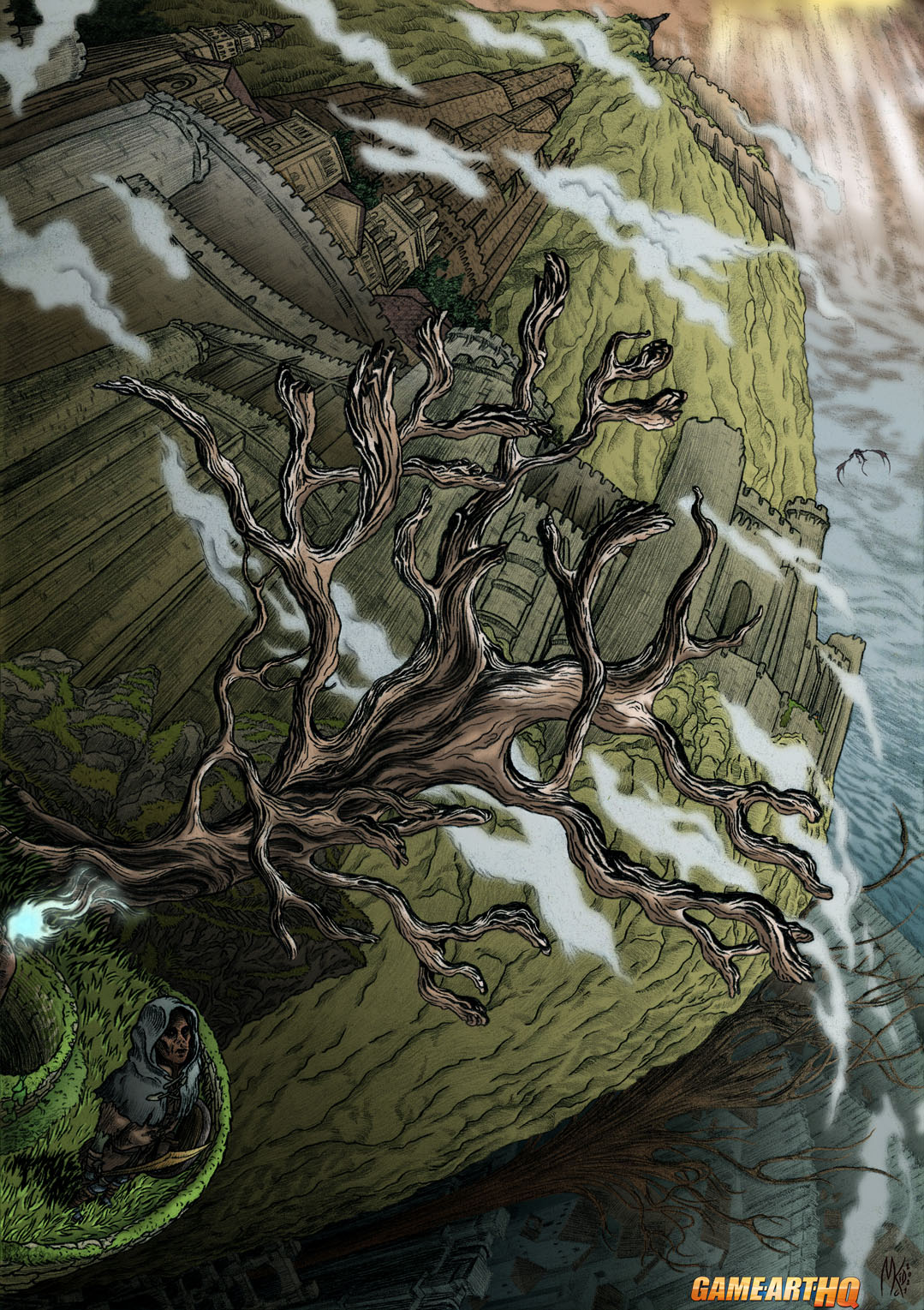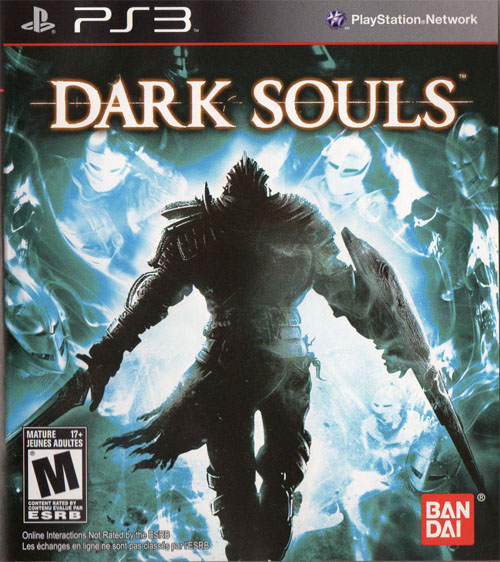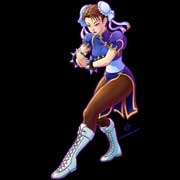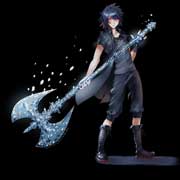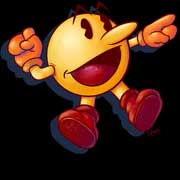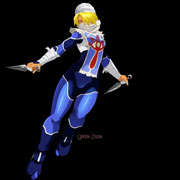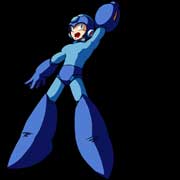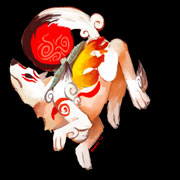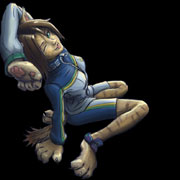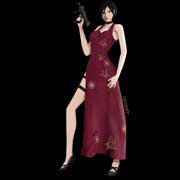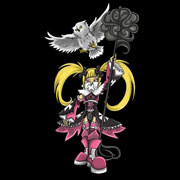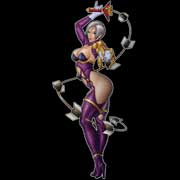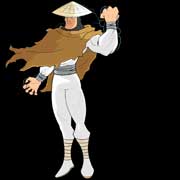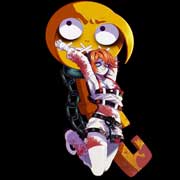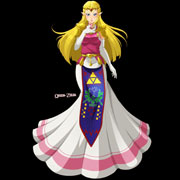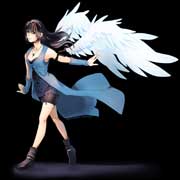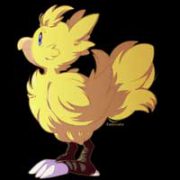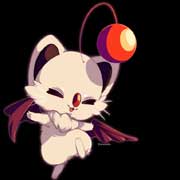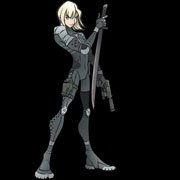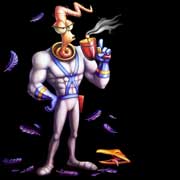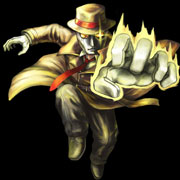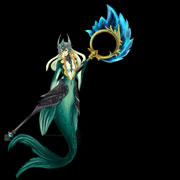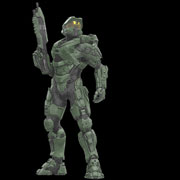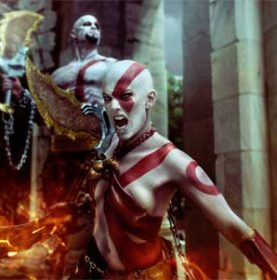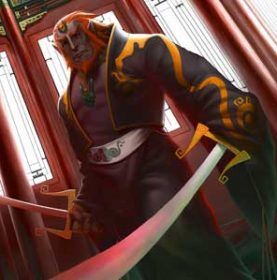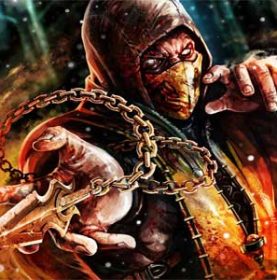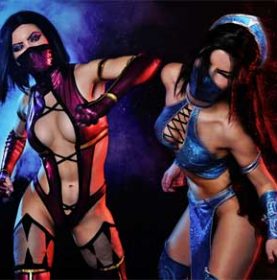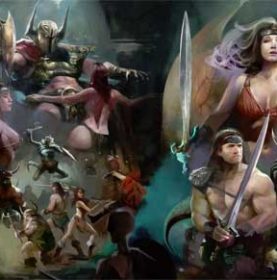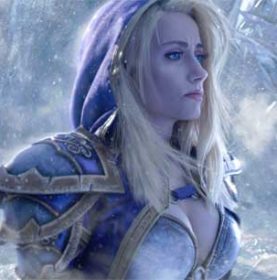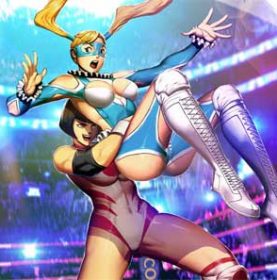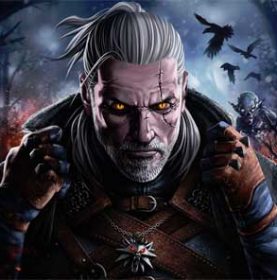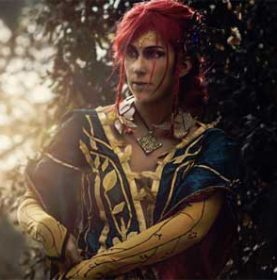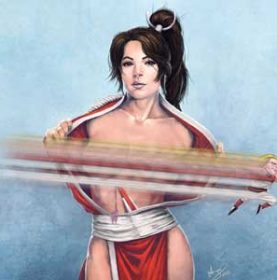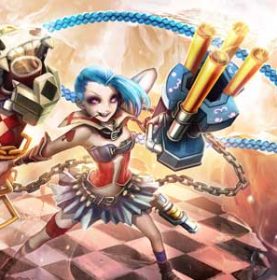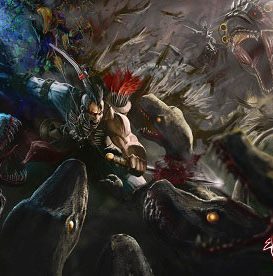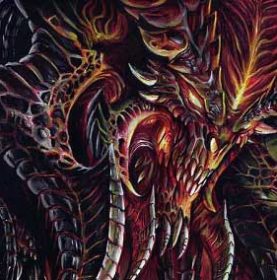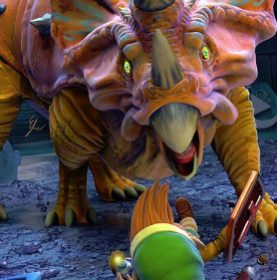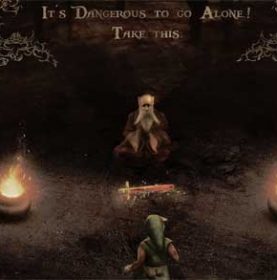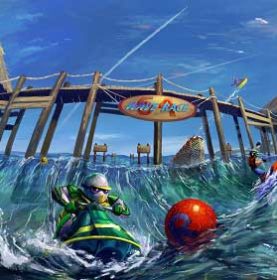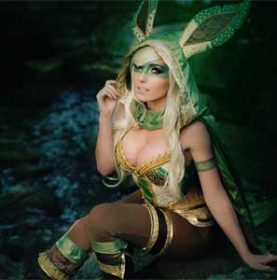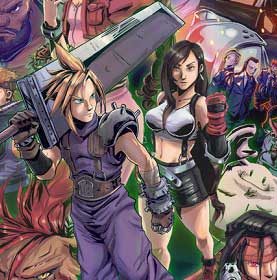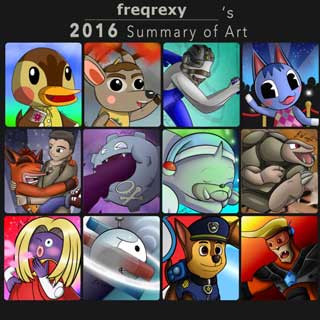Dark Souls in our Video Game Anniversary Tribute – Lets celebrate 10 Years of ..dying #2
Dark Souls – Stare into the Abyss for the Video Game Anniversary Tribute on Game-Art-HQ by Skull-the-Kid
The gameplay and the controls appear clunky and frustrating at first but with some dedication (it takes a while, I considered abandoning it during the first hours) you eventually get it and the fun begins. Not that you will necessarily get all of it… at least by yourself. For example, I learned a couple of fighting techniques from a friend of mine, playing online with her. But I may just not be that good.
By the way, the plot is quite muddled too and it stays like that the whole time, even though you can interpret it to different degrees – not without some effort. But it’s exactly the ambiguity that makes it much more interesting than what is told in most other games of similar genres.
What is really crucial is the close relationship between the two, the mood they conjure: the thick sense of mystery resulting from the sum of game design and story. Having to understand on your own how the game works and having to guess the meaning of what surrounds you, what you’re doing, and why through scattered bits of lore and dialogue is what ends up sucking you in a unique experience, captivating like few others.
Playing Dark Souls means facing a brutal challenge and enduring an endless cycle of deaths (literally and quite simply: game overs) that puts you in limbo and evokes a feeling of pointlessness even more than hopelessness. Because there’s no tangible thing to hope for in Lordran, its world.
A world that’s in ruins, a vague quest that doesn’t exactly ask you to avoid a catastrophe because it already happened a long time ago and even then it kind of seemed anticlimactic. Everything seems to have always been shrouded in darkness or cinder or fog. Lost in a perennial dusk, an empty mythological alternation of apocalypses and new geneses in which the player takes part, probably without really changing anything. So the aesthetics of classic medieval fantasy are married to a post-apocalyptic scenario that makes them far fresher than it seems at a first glance.
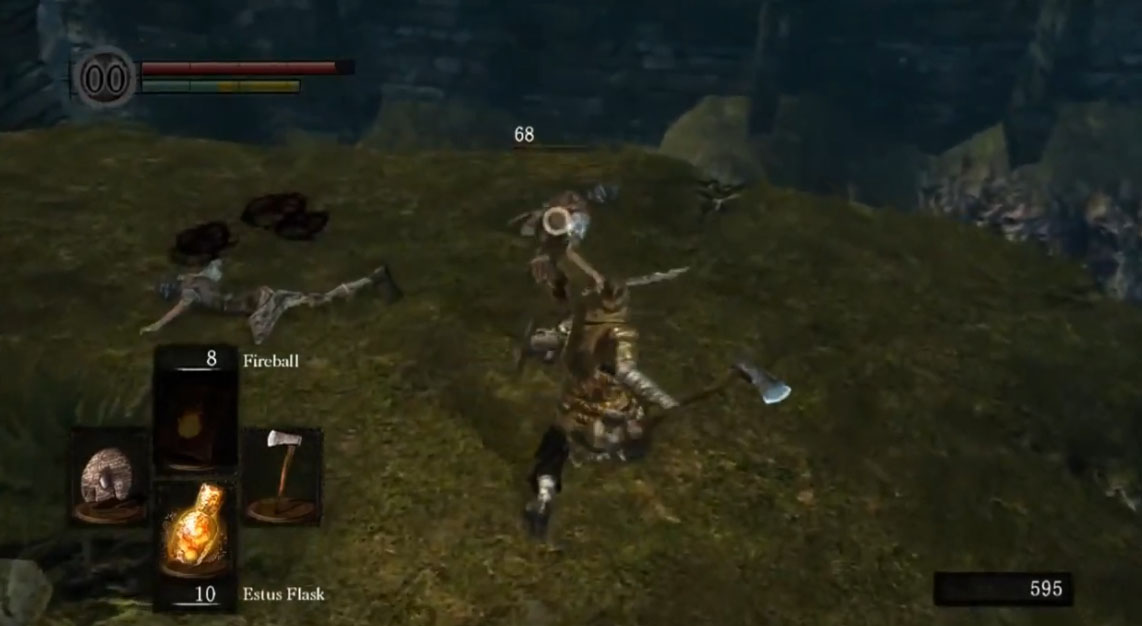
All those characteristics and mechanics strengthen the core concepts and the underlying narrative of the game, the theme of liminality that not only concerns the status of undeath but also the tangle of parallel dimensions that Lordran is said to be, the different spaces and times from which its visitors might come. I’m referring to the NPCs but even more to the actual players, who in real life come from all around the world, adding an interesting meta-layer to the whole. Having been suddenly greeted in Anor Londo by a luminous maiden, another lost soul controlled by someone else from who knows where, who guided me through something like half of the map and showed me some secrets I could have never discovered by myself, is a simple example of the sense of authenticity I tried to describe.
And, speaking of the maps! They are what I enjoyed the most about Dark Souls. The intricate non-linear structure of the game world, interconnected like few others, never ceases to amaze. To keep discovering how the levels are linked to one another during the vast majority of the playthrough is so thrilling and with this fanart, I mainly wanted to celebrate that. The dizzying verticality of the world design and its ramifications, the abyss that is Lordran. The landscapes can stretch in any direction showing other locations you might already know or not far on the horizon, often completely unexpectedly. Losing oneself in it can be a despairing endeavor, and then getting to grasp it until you feel one with it was the finest the game offered to me, where its cohesion shines the most.
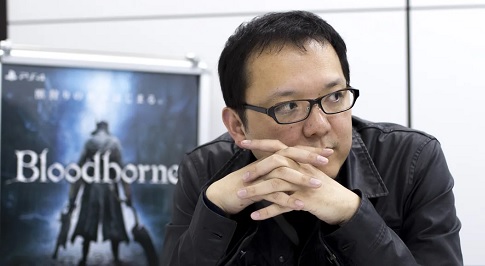
Because in the completely disillusioned vision of Hidetaka Miyazaki the only real success afforded to the player is that of mastering the game world. By the end you are the chosen undead, you shape Lordran by either illuminating it or covering it in darkness, initiating a new era. But neither of those fates look necessarily like an improvement, on one side restarting the vicious cycle that brought you there and on the other bringing changes that remain obscure. When the credits roll the fascinating, almost nonsensical quality of Dark Souls’ plot is still there, untouched. Kind of a metaphor for the essentially practical satisfaction traditional videogames provide. Overcoming obstacles as the point, not as the means toward something else, not even a clear narrative justification or an explanation of sorts.
This is what separates it even from most of the classic videogames of the past it otherwise reminds of, with its lack of nowadays’ hand-holding.
This lack of a well-defined meaning imposed through a clear narrative ultimately looks to me to be a statement on the senselessness of life.
Dark Souls by FromSoftware was first released in 2011 for the Playstation 3 and Xbox 360 Systems, a PC Version followed in 2012. it also received an HD remaster for the Playstation 4, Xbox One, PC, and a few months later also for the Nintendo Switch in 2018.
It is the second game of its kind after Demon Souls, however, a good couple of its gameplay trademarks were already a part of way older FromSoftware games like the now discontinued Kingdom Fields series. Dark Souls received two direct sequels with Dark Souls II and III, the developer created also similar games Bloodborne and Sekiro: Shadows Die Twice.
The Game got a ton of praise by both gamers and critics and was named to be one of the most influential games of its generation..as well as one of the most difficult ones. Around 2,37 million copies were sold by 2012.
Today, it is an often-used phrase by game journalists to call Game X the “Dark Souls of [insertgenre] if it is a rather challenging game 🙂
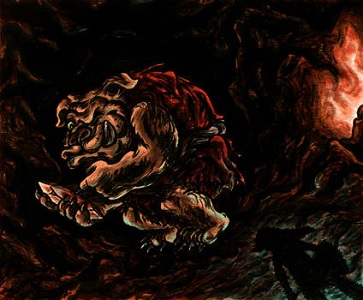 |
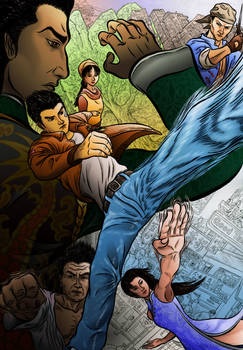 |
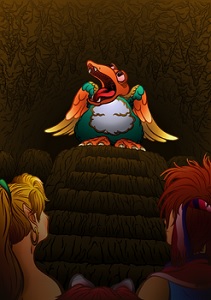 |
